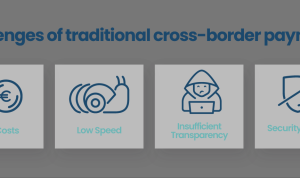Online Payment Scams and How to Avoid Them sets the stage for this enthralling narrative, offering readers a glimpse into a story that is rich in detail and brimming with originality from the outset. In an increasingly digital world, understanding the landscape of online payment scams is crucial for safeguarding your finances. With more transactions moving online, scammers are becoming more sophisticated, employing various tactics to exploit unsuspecting users.
This article will delve into the different types of online payment scams, highlight warning signs to watch for, and provide practical tips to keep your money safe.
In today’s fast-paced world, technology has integrated itself into almost every aspect of our lives, transforming the way we work, communicate, and even relax. This article delves into the impact of technology on modern society, exploring both its advantages and disadvantages, as well as how it shapes our daily routines and future prospects. To start, let’s look at the undeniable benefits that technology brings.
One of the most significant advantages is the access to information. In the past, gathering data required extensive research through libraries or other physical resources. Now, with just a few clicks, a wealth of knowledge is at our fingertips, thanks to the internet. This easy access to information has fostered an environment where learning is more inclusive and widespread. Online courses, webinars, and educational platforms provide opportunities for individuals from all walks of life to enhance their skills and knowledge base.
Moreover, technology has revolutionized the way we communicate. Gone are the days of waiting for letters to arrive; today, we can connect with anyone in the world instantly. Social media platforms allow us to share our thoughts, experiences, and even our daily lives with friends and family, regardless of geographical distance. These platforms have also facilitated global movements and social change, bringing awareness to important issues and connecting like-minded individuals.In the workplace, technology has streamlined processes and improved efficiency.
Tools such as project management software, cloud computing, and communication apps enable teams to collaborate seamlessly, whether they are in the same office or spread across the globe. This shift toward remote work has become even more pronounced in recent years, with many companies adopting flexible working arrangements. The COVID-19 pandemic accelerated this trend, highlighting the importance of technology in maintaining productivity and connection during challenging times.However, it’s crucial to recognize that the rapid advancement of technology also has its downsides.
One significant concern is the impact on mental health. With the rise of social media, many individuals find themselves comparing their lives to the curated highlights of others, leading to feelings of inadequacy and loneliness. Moreover, the constant influx of notifications and information can be overwhelming, causing anxiety and reducing our ability to focus. Cybersecurity is another pressing issue. As we rely more on technology, we also become more vulnerable to cyberattacks and data breaches.
Personal information can be compromised, leading to identity theft, financial loss, and other serious consequences. Organizations must invest in security measures to protect themselves and their customers, but this can be challenging given the evolving nature of cyber threats.Additionally, technology has contributed to a growing divide known as the “digital divide.” While many people enjoy the benefits of high-speed internet and advanced devices, others still lack access to these essential tools.
This disparity can hinder opportunities for education and employment, perpetuating cycles of poverty and inequality. Addressing this issue requires concerted efforts from governments, non-profits, and private sectors to ensure that everyone can participate in the digital age.As we look to the future, it’s essential to find a balance between embracing technology and mitigating its adverse effects. One way to achieve this is through digital literacy programs that educate individuals on the responsible use of technology.
These programs can help users navigate the online world safely, understand the importance of privacy, and develop critical thinking skills to discern credible information from misinformation.Moreover, fostering a culture of mindfulness in our technology use can significantly improve our well-being. Setting boundaries for screen time, taking regular breaks from devices, and engaging in face-to-face interactions can help alleviate some of the mental burdens associated with constant connectivity.
By being more intentional about our technology habits, we can enjoy the benefits without falling prey to its pitfalls.In conclusion, technology has undoubtedly transformed our society in profound ways. It offers incredible opportunities for learning, communication, and productivity, but it also presents challenges that we must address. By promoting digital literacy, fostering mindfulness, and ensuring equitable access to technology, we can create a future where the benefits of technology are enjoyed by all, without compromising our mental health or well-being.
As we navigate this ever-evolving landscape, it’s essential to remain adaptable and thoughtful in our approach, ensuring that we harness the power of technology to enhance our lives while being mindful of its impact on society as a whole.






